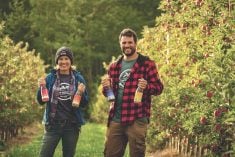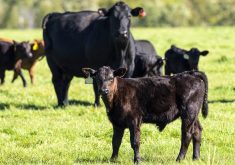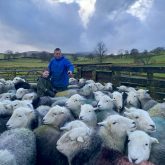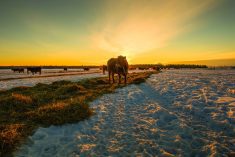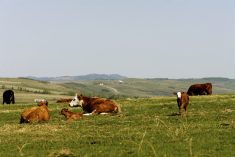Glacier FarmMedia – Rotational grazing isn’t just good for the soil — it turns out the practice results in a huge bump in soil water infiltration.
“What we were finding for water infiltration was that AMP (adaptive multi-paddock) grazing was adding about 30 per cent more water infiltration into the soil,” said Timm Döbert, who was part of a five-year study conducted by University of Alberta researchers.
“This is quite important because there has been a drought for some time and droughts have been forecasted for the future.”
Read Also
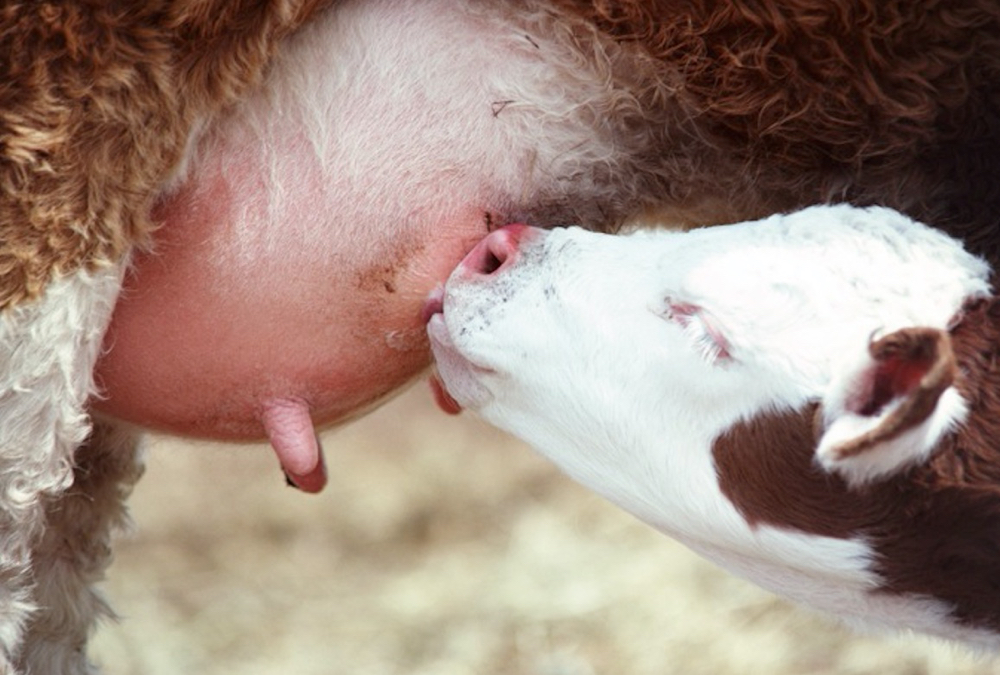
Veterinary know-how on the farm
If you’re a livestock farmer, you’ve likely faced one of the most frustrating situations on the farm: a sick or…
The project, completed in March 2021, paired AMP ranches with neighbouring ones that don’t use intensive rotational grazing. About 70 ranches from across the Prairies were included, making it one of the largest such studies ever conducted.
“Small-scale studies have been conducted before, over the fence,” said Döbert, who was a post-doctoral fellow at U of A. “But it’s never really been tested at a broader scale. So this was really important too, because there is so much variation in so much of everything in nature.
“It’s difficult to compare a handful of ranchers, so it was important to get a large pool of ranchers across a large radius.”
Döbert said the primary focus of the study was soil carbon.
“But carbon is not just isolated — it’s related to the processes which are driving sequestration of carbon and emissions of soil organic carbon into the atmosphere, taking us to plants, which are taking up the atmospheric carbon, to enzymes and microbes which drive the activities in the soil,” he said.
Water and carbon cycles are linked, and water infiltration is one component of this, he said.
Two grazing practices in particular made a huge difference on a ranch, researchers found.
“The rest-to-grazing ratio looks at how long the grazing takes place and how much rest is given to a piece of land. It’s the relationship between rest and grazing, “said Döbert.
The other key practice was the animal unit density, not the stocking rate.
“We looked at the density because the idea of AMP is to hit a small area of land for a short period of time with a high density of animals,” he said. “The entire land that belongs to the rancher may support the same amount of cattle that belongs to a rancher who is not using this high rotational system.
“The rest-to-grazing ratio and density really separated AMP and neighbouring ranches quite nicely.”
But when they drilled down, it was really the resting period that seemed to have the biggest impact.
Another key finding was that “water infiltration is not the same as water availability.”
When there is more water infiltration through the soil, there’s a greater chance that more water will be available to plants.
Döbert said a 30 per cent increase in water infiltration can make a major difference.
“What is clear from the water infiltration study — we have seen that the extended rest period is beneficial.”
And that beauty of this practice is that it is “straightforward to implement and doesn’t require any new techniques,” he added.
One of the participants was cow-calf producer Sean McGrath, whose ranch near Vermilion has been using rotational grazing for about 35 years.
The study backs up what he’s seen — a massive difference in the water infiltration on his land compared to other ranches in his area.
“I think it changes the way our sloughs fill,” he said. “If we have a big rain or a big melt, our sloughs don’t necessarily fill up. They may fill from underneath later on or they may hold the moisture they’ve got longer.
“There’s so much vegetation there that there is not a lot of overland filling and flooding. It changes the water cycle.”
McGrath said he is always thinking about “effective rainfall.”
“I may get an inch of rain and my neighbour might get an inch of rain, but if I can get that entire inch into my ground as opposed to having it run off, my inch is bigger than their inch,” he said.
McGrath said he has seen the benefits of a longer rest-to-grazing ratio on his ranch.
“The roots will open up the pores and there’s a chance for that soil to rebound from any compaction,” he said. “If you’re doing it carefully or cautiously, you’re also getting some nutrient cycling, but you’re putting some litter on the ground. That slows the water down.”
The litter slows down the water and diffuses it, he said.
“If you’ve got enough organic matter in your soil from that pulse of grazing, and then the rest, that will hold that moisture and it will cushion the blow from those raindrops, and allow them to soak into the ground as opposed to running off, or hitting and bouncing back in the air and taking soil and nutrients with it,” he said.
The project included professors from the Rangeland Research Institute, and researchers working in economic and social sciences. U of Alberta ecology professor, Mark Boyce, spearheaded the project.
– This article was originally published at the Alberta Farmer Express.





